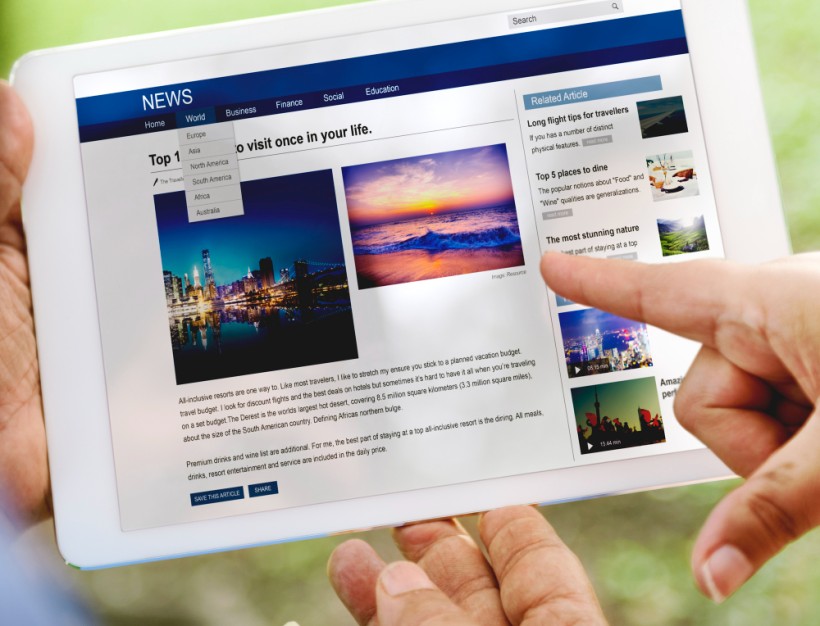The fight for attention and visibility is getting tougher.
Every business wants to be seen. Every leader wants their voice heard. But the question is—where should you actually be investing your time and resources to get in front of the right people?
If you’re a founder, executive, or marketing leader, you already know the usual advice: “Be everywhere.” But that’s not realistic. Time and money are limited, and not all channels deliver equal results.
A recent report from Greentarget and Zeughauser Group reveals what content sources decision-makers actually trust. The findings?
→ LinkedIn is surging
→ Traditional media still holds weight
→ Social media is more hit-or-miss than ever
So let’s break down where leaders should be focusing their content efforts in 2026 to increase visibility, build authority, and attract real business opportunities.
The most valuable content sources for business leaders, ranked
Decision-makers don’t just consume content—they rely on it to stay informed and make better choices. The report shows that some sources are far more trusted than others.
Here’s what stands out:
- Traditional media (e.g., WSJ, Bloomberg, FT) – still dominant, especially among C-suite leaders.
- Industry trade publications – highly credible for niche industries.
- Professional websites and thought leadership blogs – gaining traction.
- LinkedIn – a must-have platform for executives and in-house counsel.
- Peer-driven rankings and reviews – rising influence in buying decisions.
- Instagram, Threads, and Twitter/X – limited value for B2B but still relevant in some cases.
Each of these channels plays a role in building credibility and visibility. Let’s look at how to leverage them effectively.
LinkedIn: The number one platform for decision-makers
If you’re not investing in LinkedIn, you’re already behind.
The data shows:
- 70% of in-house counsel and 64% of C-suite executives rank LinkedIn as one of their most valuable content sources.
- Executives aren’t just scrolling—they’re actively engaging with thought leadership content.
- Brands that show up consistently on LinkedIn are seeing more inbound leads, partnerships, and faster deal cycles.
How to win on LinkedIn in 2026
- Post consistently – visibility compounds over time. Start with 2-3 posts per week.
- Use thought leadership content – share insights, industry trends, and personal experiences.
- Engage with your audience – comment, reply, and start conversations.
- Invest in Thought Leader Ads (TLAs) – LinkedIn’s most effective paid ads for amplifying content to the right people.
- Optimize your profile – your LinkedIn page is your digital first impression. Make sure it communicates credibility and expertise.
For B2B brands, LinkedIn isn’t just an option—it’s the platform that drives real business. (Dive deeper into why here).
Traditional media and trade publications: still the gold standard
Despite the rise of digital platforms, traditional media still holds power.
- 85% of in-house counsel and 90% of C-suite leaders still consider sources like The Wall Street Journal, Bloomberg, and The Financial Times highly valuable.
- Trade publications covering niche industries remain a trusted source for executives looking for deep insights.
How to get featured
- Pitch to journalists – develop relationships with reporters who cover your industry.
- Write guest articles – thought leadership pieces in top publications build authority.
- Leverage PR strategically – a well-placed article can have more impact than a full-scale ad campaign.
Getting featured in top-tier media builds long-term credibility. It’s not always easy, but it pays off.
Peer-driven rankings and reviews: why they matter
People trust people. That’s why peer-driven content—like rankings, testimonials, and customer reviews—is gaining influence.
- 52% of in-house counsel and 53% of C-suite leaders rely on peer rankings.
- B2B buyers often look at industry awards, best-of lists, and third-party reviews before making decisions.
How to leverage this for your brand
- Encourage client testimonials – positive reviews from real customers build trust.
- Submit for industry rankings and awards – third-party recognition increases credibility.
- Showcase success stories – case studies and client results should be a key part of your content strategy.
If others are vouching for your brand, it carries more weight than anything you say yourself.
Social media: Where should you be?
Social media is still relevant—but not all platforms are worth your time.
What’s working
✅ LinkedIn – best for B2B, thought leadership, and lead generation.
✅ Instagram and Threads – gaining traction for personal branding and lifestyle-driven industries.
✅ YouTube – great for long-form educational content and SEO visibility.
What’s fading
❌ Twitter/X – engagement and trust are declining among professionals.
❌ Facebook – no longer a priority for most business leaders.
Takeaway: If you’re in B2B, double down on LinkedIn and thought leadership instead of spreading yourself thin across every platform.
Where to prioritize in 2026
Here’s how to structure your visibility strategy:
- Go all-in on LinkedIn – build your brand, engage, and leverage Thought Leader Ads (TLAs).
- Invest in PR and media exposure – get featured in industry trade publications and top business outlets.
- Leverage peer-driven content – encourage testimonials, case studies, and industry rankings.
- Use social media strategically – stick to platforms where your audience actually engages.
Final thoughts
Attention is the new currency. The brands and leaders who show up, share insights, and position themselves as trusted experts will win in 2026.
The question isn’t if you should invest in visibility—it’s where you should be spending your time.
And now, you know exactly where to start.
Mo is the founder and CEO of Column, helping leaders shape public opinion through content and research. Connect with him on LinkedIn.





